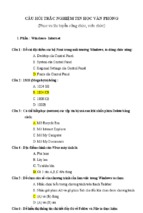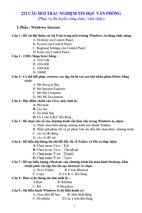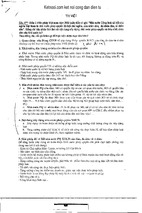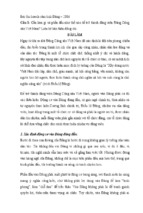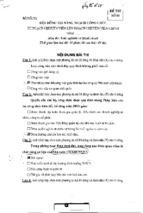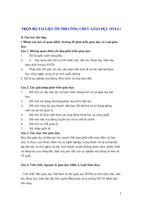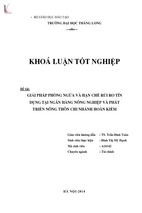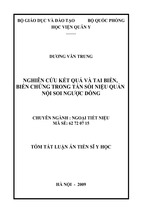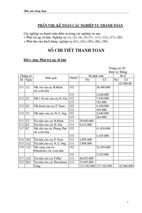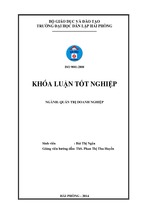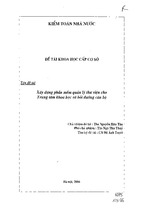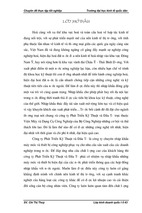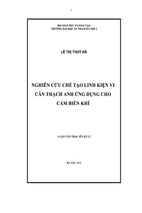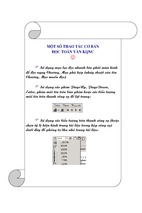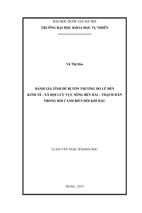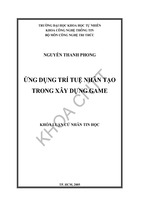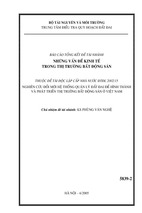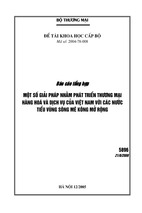113
Linguistic Perception
and Second Language
Acquisition
The author introduces the L2 Linguistic Perception (L2LP) model, a new formal
and comprehensive proposal which integrates, synthesizes, and improves on
previous studies, and therefore constitutes the most explanatorily adequate
account of the whole process of L2 sound acquisition. More specifically, it
proposes that the description of optimal L1 and L2 perception allows us to
predict and explain the initial state, the learning task, and the end state that
are involved in the acquisition process. It advances the hypothesis of Full
Copying which constitutes a formal linguistic explanation for the prediction
that learners will initially manifest an L2 perception that matches their
optimal L1 perception. It also predicts that the degree of mismatch between
perception grammars will define the number and nature of the learning tasks.
With respect to L2 development, it posits that learners will either need to create
new perceptual mappings and categories, or else adjust any existing
mappings through the same learning mechanisms that operate in L1
acquisition. Finally, the model’s hypotheses of separate perception grammars
and language activation predict that learners will achieve optimal L2
perception while preserving their optimal L1 perception.
This book addresses questions of speech perception, phonetics, phonology,
psycholinguistics, and language acquisition, and should therefore be of
interest to researchers working in any of these areas.
ISBN 90-76864-80-2
Linguistic Perception and Second Language Acquisition
In Linguistic Perception and Second Language Acquisition, Paola Escudero
provides a detailed description, explanation, and prediction of how optimal
second language (L2) sound perception is acquired, and presents three
empirical studies to test the model’s theoretical principles.
Paola Escudero
Paola Escudero
UiL OTS
Paola Escudero
Linguistic Perception
and Second Language
Acquisition
Explaining the attainment of
optimal phonological categorization
Linguistic Perception and
Second Language Acquisition
Explaining the attainment of
optimal phonological categorization
Published by
LOT
Trans 10
3512 JK Utrecht
The Netherlands
phone: +31 30 253 6006
fax: +31 30 253 6000
e-mail:
[email protected]
http://wwwlot.let.uu.nl/
Cover illustration: painting by Mike Sharwood Smith
ISBN 90-76864-80-2
NUR 632
Copyright © 2005: Paola Escudero. All rights reserved.
Linguistic Perception and
Second Language Acquisition
Explaining the attainment of
optimal phonological categorization
Linguïstische Perceptie en Tweedetaalverwerving,
of hoe men leert optimaal fonologisch te categoriseren
(with summaries in Spanish, English, and Dutch)
Proefschrift
ter verkrijging van de graad van doctor
aan de Universiteit Utrecht op gezag van
de Rector Magnificus, Prof. dr. W. H. Gispen,
ingevolge het besluit van het College voor Promoties
in het openbaar te verdedigen
op dinsdag 8 november 2005
des middags te 12:45 uur
door
Paola Rocío Escudero Neyra
geboren op 5 december 1976 te Lima, Perú
Promotoren:
Prof. dr. W. Zonneveld
Prof. dr. P.P.G. Boersma (UvA)
Co-promotor:
dr. R.W.J. Kager
A Marco y Rocío,
los cimientos y pilares de mi vida
Contents
0
Introduction…………………………………………………………… .... 1
0.1
Why L2 perception? ……………………………………………………1
0.2
Contribution and outline…………………………………………….. 4
PART I: LINGUISTIC MODELLING OF SOUND
PERCEPTION AND ITS ACQUISITION
1 Modelling speech perception………………………………………… ……7
1.1
Modelling speech perception as an auditory mapping ……….…….… 9
1.1.1 Speech perception as a single universal mapping ………………… 9
1.1.2 Speech perception has a universal and a linguistic component………. 11
1.2
Evidence for the linguistic nature of speech perception………………13
1.2.1 Auditory perception versus linguistic perception………………… 14
1.2.2 Language-specific one-dimensional sound categorization. ……… 17
1.2.3 Language-specific auditory cue integration…...………….……… 21
1.3
Modelling speech perception as a language-specific phenomenon….. 26
1.3.1 Language-specific perception within phonetics………….……… 27
1.3.2 Language-specific perception within psycholinguistics…..……… 29
1.3.3 Language-specific perception within phonology………..………. 32
1.4
Summary and implications..……………………………….. ……… 35
1.4.1 Resolving the nature of sound representation………….……… 36
1.4.2 How to model linguistic perceptual mappings………..………… 37
1.4.3 Implications for a comprehensive model of sound categorization 38
2
Linguistic Perception (LP): a phonological model of sound
perception ................................................................................................................ 41
2.1
The elements of Linguistic Perception (LP).................................................. 42
2.1.1
Perceptual mapping component: the perception grammar ..................... 44
2.1.2
Representational component: the perceptual input................................. 49
2.2
The optimal perception hypothesis ............................................................ 52
2.2.1
Optimal one-dimensional categorization.............................................. 53
2.2.2
Optimal cue integration........................................................................... 58
2.3
Acquiring optimal L1 linguistic perception ............................................... 65
2.3.1
Initial perception grammar...................................................................... 66
ii
CONTENTS
2.3.2
2.3.3
2.3.4
2.4
2.4.1
2.4.2
2.4.3
The Gradual Learning Algorithm (GLA)............................................. 68
Learning mechanism 1: one-dimensional auditory-driven
learning ....................................................................................................... 71
Learning mechanism 2: lexicon-driven learning and cue
integration .................................................................................................. 75
The proposal for word recognition ............................................................ 77
Lexical representations and recognition grammar .............................. 77
The L1 acquisition of optimal L1 recognition..................................... 79
Summary: adult Linguistic Perception and its L1 acquisition ........... 81
PART II: MODELLING THE L2 ACQUISITION OF SOUND
PERCEPTION
3
The Second Language Linguistic Perception (L2LP) model ................. 85
3.1
The L2LP model: five ingredients .............................................................. 85
3.1.1
Distinction between perceptual mappings and sound categories... 86
3.1.2
L2LP ingredient 1: optimal L1 perception and optimal target
L2 perception ........................................................................................... 87
3.1.2.1
L2LP ingredient 1: prediction and explanation......................... 88
3.1.2.2
L2LP phonological/phonetic description.................................. 89
3.1.3
The logical states of L2 sound perception and the L2LP model ..... 94
3.2
L2LP ingredient 2: the L2 initial state ........................................................ 97
3.2.1
L2LP prediction: L2 initial equals cross-language perception......... 98
3.2.2
Background explanation: L1 Transfer................................................. 99
3.2.3
L2LP explanation/description .............................................................100
3.2.3.1
Full Copying of L1 perceptual mappings ................................101
3.2.3.2
Already-categorized versus non-previously categorized
dimensions....................................................................................102
3.2.3.3
Phonemic equation and category re-use..................................104
3.3
Ingredient 3: The L2 learning task...........................................................105
3.3.1
Prediction: learning task equals cross-language difference .............105
3.3.2
Explanation/description: perceptual and representational
tasks ..........................................................................................................107
3.3.2.1
L2LP perceptual task: Changing and creating mappings .....107
3.3.2.2
L2 representational task: Changing the number of L2
categories .......................................................................................109
CONTENTS
iii
3.4
Ingredient 4: L2 development ...................................................................109
3.4.1
L2LP prediction: L2 development equals L1 development ...........111
3.4.2
Background explanation: access to development and learning
mechanisms .............................................................................................111
3.4.3
L2LP explanation/description: Full Access to the GLA.................112
3.4.3.1
GLA category formation in L2 development .........................112
3.4.3.2
GLA category boundary shifts in L2 development ..............113
3.5
Ingredient 5: the L2 end state....................................................................113
3.5.1
L2LP prediction: optimal L2 and optimal L1....................................114
3.5.2
Background explanation: limitations for the L2 end state...............115
3.5.2.1
The role of cognitive plasticity and the L2 input....................115
3.5.2.2
The interrelation between the L1 and the L2……… …. .. 116
3.5.3
L2LP explanation/description: Input versus plasticity ....................117
3.5.3.1
Rich L2 input overrules small cognitive plasticity ..................117
3.5.3.2
The hypothesis of separate perception grammars..................118
3.6
Summary and L2LP sound perception scenarios...................................121
3.6.1
Learning scenarios: L2LP prediction/explanation............................123
3.6.2
Scenarios: L2LP description of the different learning tasks ...........124
4
A review of other L2 sound perception models .........................................127
4.1
Aim and scope of five L2 perception models.........................................127
4.2
Speech perception and its acquisition ......................................................128
4.2.1
Speech perception in phonological models of L2 sound
perception ................................................................................................129
4.2.2
Speech perception within phonetic models of L2 perception .......130
4.2.3
L1 acquisition within the five models .................................................131
4.2.4
Comparison with the L2LP’s framework model...............................132
4.3
L2 sound perception ...................................................................................135
4.3.1
L2 initial state ..........................................................................................135
4.3.1.1
Major’s OPM and Brown’s PIM...............................................135
4.3.1.2
PAM, NLM, and SLM............................................................... 136
4.3.1.3
Comparison with the L2LP initial state ...................................137
4.3.2
L2 development ......................................................................................139
4.3.2.1
OPM and PIM's developmental proposals………………. 139
4.3.2.2
PAM, NLM, and SLM's developmental proposals..…….. 140
4.3.2.3
Comparison with the L2LP developmental state .. . …… 141
iv
CONTENTS
4.3.3
L2 end state .............................................................................................143
4.3.3.1
Comparison with the L2LP end state…………………… 145
4.3.4
L2 sound perception scenarios.............................................................146
4.3.4.1
Comparison with the L2LP scenarios………….....…….…149
4.4
Summary and general comparison with the L2LP model.....................150
PART III: EMPIRICAL TESTS OF THE L2LP MODEL
5
Learning NEW L2 sounds ................................................................................155
5.1
What does learning to perceive NEW sound categories involve? …. 158
5.2
L2 Linguistic Perception in a NEW scenario..........................................161
5.2.1
Ingredient 1: predicting L1 and target L2 optimal perception........161
5.2.2
Ingredient 2: predicting cross-language and initial L2
perception ................................................................................................170
5.2.3
Ingredient 3: predicting the L2 learning task .....................................173
5.2.4
Ingredient 4: predicting L2 development ...........................................175
5.2.5
Ingredient 5: predicting the L2 end state............................................180
5.3
Evidence: Spanish learners of Southern British English (SBE)...........181
5.3.1
Model ingredient 1: Spanish and SBE perception data....................183
5.3.2
Model ingredient 2: cross-language and initial L2 perception
data............................................................................................................187
5.3.3
Spanish learners’ development and end state ....................................195
5.3.4
Discussion................................................................................................198
5.4
Learning new sounds: L2LP predictions versus the
evidence.........................................................................................................200
6
Learning SUBSET L2 sounds..........................................................................203
6.1
Is there a learning task in a SUBSET L2 perception scenario ............. 204
6.2
Ingredients of L2 linguistic perception in a SUBSET scenario ............209
6.2.1
Ingredient 1: predicting optimal perception from
environmental production.....................................................................209
6.2.2
Ingredient 2: predicting cross-language and initial L2
perception ................................................................................................214
6.2.3
Ingredient 3: predicting the L2 learning task .....................................218
6.2.4
Ingredient 4: predicting L2 development ...........................................220
6.2.5
Ingredient 5: predicting the L2 end state............................................236
CONTENTS
v
6.3
Evidence: Dutch learners of Spanish .......................................................238
6.3.1
Model ingredient 1: Dutch and Spanish perception data……….. 241
6.3.2
Model ingredient 2: cross-language and initial L2 perception
data............................................................................................................245
6.3.3
Dutch learners’ L2 perception data .....................................................246
6.3.4
Discussion................................................................................................251
6.4
Learning SUBSET sounds: the predictions versus the evidence..........251
7
Learning SIMILAR L2 sounds ........................................................................255
7.1
Is there an L2 learning task in a SIMILAR scenario?.............................257
7.2
Ingredients of L2 linguistic perception in a SIMILAR scenario...........260
7.2.1
Ingredient 1: predicting optimal perception from
environmental production.....................................................................261
7.2.2
Ingredient 2: predicting cross-language perception and
initial L2 perception ...............................................................................271
7.2.3
Ingredient 3: predicting the L2 learning task .....................................273
7.2.4
Ingredient 4: predicting L2 development ...........................................276
7.2.5
Ingredient 5: predicting the L2 end state............................................280
7.3
Empirical evidence A: Spanish learners of Scottish English (SE).......283
7.3.1
Scottish English (SE) and Spanish perception ..................................283
7.3.2
Cross-language and initial L2 perception ...........................................286
7.3.3
L2 development in Spanish learners of Scottish English (SE) .......288
7.3.4
Discussion................................................................................................291
7.4
Empirical evidence B: Canadian English (CE) learners of
Canadian French (CF).................................................................................292
7.4.1
Canadian English (CE) and Canadian French (CF)
perception ................................................................................................292
7.4.2
Cross-language perceptual mismatch and L2 initial state ................295
7.4.3
L2 development in Canadian English (CE) learners of
Canadian French (CF)............................................................................297
7.4.4
Discussion................................................................................................301
7.5
Learning similar sounds: the L2LP predictions versus the
evidence.........................................................................................................302
8
Evaluation and conclusion ...............................................................................305
8.1
Why a linguistic model of sound perception?.........................................305
vi
CONTENTS
8.2
What does the L2LP model provide?.......................................................308
8.2.1
A thorough description of the learner’s L1 and target L2..............308
8.2.2
A linguistic model for the L2 initial state ...........................................309
8.2.3
A thorough description of the L2 learning task ................................310
8.2.4
An explicit and comprehensive proposal for L2 development ......311
8.2.5
An explanation for the attainment of optimal L2 sound
perception ................................................................................................313
8.2.6
Three different scenarios and their comparative learning
paths..........................................................................................................313
8.3
Overall contribution....................................................................................315
8.4
Future research.............................................................................................316
Resumen ...........................................................................................................................319
Summary...........................................................................................................................325
Samenvatting...................................................................................................................331
References ........................................................................................................................337
Acknowledgements ………………………………………………………… 349
Curriculum Vitae…………………………………………………………… 351
0
Introduction
It is well known that second language (L2) learners have great difficulty when attempting to learn L2 sounds. This difficulty is clearly observed in the phenomenon
commonly known as ‘foreign-accented speech’ which seems to be characteristic of
most adult L2 learners. Typically, the latter are outperformed by infants and young
children when the task is to learn the sounds of a language. That is, every child
learns to produce and perceive ambient language sounds resembling adult performance in that language. In contrast, adult learners struggle to acquire native-like performance and commonly maintain a foreign accent even after having spent several
years in an L2 environment. This paradoxical situation has sociological consequences since the general abilities of adult L2 learners are commonly judged on the
basis of their language skills. Therefore, if their speech is not intelligible or ‘accented’, it may impede communication and even prevent integration into the community of native speakers.
The primary objective of the present study is to provide a comprehensive description, explanation, and prediction of how L2 sound perception is acquired.
Below, I will first discuss the arguments in favour of focusing on L2 perception
and then explain the difficulties involved in L2 production. Finally, I will outline
the contents of this study.
0.1
Why L2 perception?
In early phonological theory, the role of perception in explaining the performance
of L2 speakers was taken very seriously. This approach was manifested in the writings of esteemed researchers such as Polivanov & Trubetzkoy in the first half of
the 20th century. Polivanov (1931) provided several anecdotal examples of how the
phonemes of an L2 are perceived through the L1 system. These examples could be
taken to mean that the difficulties in the production of L2 sounds arise from the
influence of L1 perception. In addition, Trubetzkoy (1939/1969) also suggested
that the inadequate production of L2 sounds had a perceptual basis since he considered that the L1 system acted as a ‘phonological filter’ through which L2 sounds
are perceived and classified. However, due to the comparative ease of collecting
empirical data for L2 production, the phenomenon of ‘foreign accented speech’
was almost exclusively addressed and explained from the point of view of produc-
2
INTRODUCTION
tion difficulties. The most prominent early exemplars of this tradition are, among
others, Lado (1957), Eckman (1977, 1981), and Major (1987).
Although most observations and explanations of L2 segmental phonology have
been based on production data, approaches based on perceptual difficulty have also
been considered, though mainly in the field of phonetics. Cross-linguistic speech
perception research performed in the 1960s showed that L2 learners also have
‘perceptual foreign accents’, i.e., their perception is shaped by the perceptual system
of their first language (cf. Strange 1995: 22, 39). This seems to suggest that the
origin of a foreign accent is the use of language-specific perceptual strategies that
are entrenched in the L2 learner and that cannot be avoided when encountering L2
sound categories. In other words, problems producing L2 sounds could originate in
large measure from difficulties in perceiving such sounds accurately, that is, in a
native-like fashion. I argue that a full account of L2 segmental phonology should
explain the way in which L2 speakers manage to learn how L2 segments should
sound before explaining how they achieve accurate L2 production. This is because
the accurate knowledge of L2 sounds can only emerge from the learner’s ability to
perceive such sounds correctly and to form appropriate representations of them.
Several researchers have addressed the controversy surrounding the interplay
between the perception and production of L2 sounds, and compilations of the
studies that consider such an interrelation are abundant. For instance, Llisterri
(1995) and Leather (1999), among others, reviewed a number of studies supporting
the argument that the L2 development of perception precedes that of production,
and that accurate perception is a prerequisite for accurate production. Borden,
Gerber & Milsark (1983) found that Korean learners of the English /r/-/l/ contrast had more native-like phonemic identification and self-perception than production, and suggested that perceptual abilities might be a prerequisite for accurate
production. Neufeld (1988) described his findings as representing a ‘phonological
asymmetry’ since his learners often showed to be much better at perceptually detecting sound errors than at avoiding producing them. Barry (1989) and Grasseger
(1991) found that learners who showed “well-established perceptual categories”
also manifested accurate production, arguing that perceptual tests can be a good
means for detecting difficulties in producing L2 vowels and consonants. Further
support for the hypothesis that L2 perception develops before and is a prerequisite
to L2 production is also provided in Flege (1993) and Rochet (1995).
However, some studies have challenged this intuitive and widely evidenced
property of L2 sound acquisition. For instance, Goto (1971) and Sheldon &
INTRODUCTION
3
Strange (1982) found that, for Japanese learners of English, perceptual mastery of
the English /r/-/l/ contrast does not necessarily precede and may even lag behind
acceptable production. Sheldon (1985) reanalysed Borden et al’s (1983) results and
argued that their conclusion did not apply to all learners, given her findings that the
longer an exposure to the L2 learners had had, the less possible it became to find
that their perception was superior to their production. Flege & Eefting (1987)
found that their Dutch learners produced substantial differences between stop
consonants in their two languages but that they had only a small shift in the location of the category boundary when identifying the stops in the two languages. This
suggested that the distinction between the two languages was not as clear in perception as in production. Furthermore, bilingual studies (Caramazza et al. 1973,
Elman et al. 1977, Mack 1989) have shown that production can be more accurate
than perception. For instance, Caramazza et al. (1973) tested the perception and
production of voiced and unvoiced consonants among Canadian English-French
bilinguals, and found that the production of their less proficient or non-dominant
language was better than its perception.
Although these types of arguments may to some extent contradict the fact that
L2 perception develops before production and that the former ability should be in
place before the latter is mastered, these experimental studies evince shortcomings
that may have influenced the conclusions that were drawn from them. For instance,
Flege & Eefting’s findings along with those of the bilingual literature may be due to
a problematic manipulation of the ‘language set’ variable resulting in the activation
of two languages (cf. Chapter 3). From the results of this study, it can be inferred
that the lack of rigorous control in language set affected the learners’ perception
abilities more than their production abilities. Therefore, given the weight of the
evidence, it can be concluded that perception develops first and needs to be in
place before production development can occur, and also that the difficulties with
L2 sounds have a perceptual basis such that incorrect perception leads to incorrect
production. This means that prioritizing the role of perception in explaining the
acquisition of L2 sounds seems to be valid and is perhaps the most propitious way
of approaching the phenomenon. In fact, many L2 proposals mainly from the field
of phonetics assume that a learner’s ability to perceive non-native sounds plays a
crucial role in the acquisition of L2 segmental phonology.
4
0.2
INTRODUCTION
Contribution and outline
This study is intended to constitute a theoretical and empirical contribution to the
fields of second language acquisition and phonetics/phonology.1 With respect to
the theoretical contribution, it advances a linguistic model of L2 sound perception,
which is a phenomenon that has often been considered outside the domain of
linguistic theory proper and the subject matter of disciplines such as phonetics and
psycholinguistics.
There are three main parts to this study. Part I discusses the general phenomenon of speech perception and the first language (L1) acquisition of speech perception, Part II introduces a new model of L2 sound perception and examines the
models that have preceded it, and Part III presents empirical data to test and evaluate the L2 proposal. Part I comprises two chapters which motivate the theoretical
assumptions of the L2 model advanced within Part II of this study. In Chapter 1, I
discuss the ways in which speech perception has been modelled in the literature,
the evidence in favour of bringing speech perception into the domain of phonological theory, and the criteria that are required for a comprehensive model of
sound perception. In Chapter 2, I discuss in detail the Linguistic Perception (LP)
model, which I consider to be the most explanatorily adequate proposal for speech
perception and its acquisition. This model’s general speech perception proposal is
based on Boersma (1998) and on Escudero & Boersma (2003), and the first language (L1) acquisition proposal is based on Boersma, Escudero & Hayes (2003).
Chapter 2 contains my personal interpretation and explanation of the speech perception proposal as well as the language acquisition issues raised in these three
articles. Throughout the chapter, it is clearly stated how this version differs from
the original proposals.
Part II of this study deals with theoretical proposals for L2 sound perception.
In chapter 3, I advance a linguistic model for L2 sound perception which aims at
describing, explaining, and predicting L2 performance in the three logical states of
language acquisition, namely the initial state, the developmental state, and the end
state. This is the essence of the Second-Language Linguistic Perception (L2LP)
model. This model has five theoretical ingredients, which are also methodological
phases, and these ingredients allow for a thorough handling of L2 sound percep1 My research has been funded by the Utrecht Institute of Linguistics since October 2001, but some of
my work on this subject dates from 2000, and many of my articles written (or co-written) between
2000 and 2004 are the result of previous research.
INTRODUCTION
5
tion. Most importantly, it provides a connection between the acquisition states in
L2 sound perception through the proposed rigorous description of the learner’s L1
and target L2, and through an explicit account of the L2 learning task. In chapter 4,
I review five models of L2 sound perception and compare them to the L2LP
model with respect to their general speech perception and L2 acquisition proposals.
It is concluded that the L2LP synthesizes previous proposals and improves on their
explanatory adequacy. In this chapter, the comparison is made only on theoretical
grounds but the models’ predictions for L2 sound perception in diverse learning
scenarios are clearly stated so that the reader can evaluate their validity in view of
the L2 perception data presented in last part of the study.
Part III constitutes the empirical portion of this study. It presents L2 sound
perception data that document three different learning scenarios in three different
chapters. Two well-attested L2 sound categorization scenarios are considered: a
NEW scenario in which learners are confronted with L2 phonological categories
(i.e., phonemes) that do not exist in their L1, and a SIMILAR scenario in which
learners are confronted with L2 phonemes that have counterparts in their L1.
Moreover, it is proposed that there exists another scenario called SUBSET which
has not previously been considered in other models of L2 sound perception. In this
scenario, learners are confronted with L2 phonological categories that have more
than one counterpart in their L1, and which therefore constitute a subset of their
L1 categories. Although previous research has not found this third scenario to
constitute a learning problem, the L2LP model predicts that L2 learners will encounter difficulties if the L2 sounds form a subset of their L1 sound categories.
This model gives specific predictions, explanations, and descriptions, and it proposes a comparative level of L2 difficulty for each of the three scenarios. In each
empirical chapter (cf. Chapters 5 to 7), cases illustrating these specific learning
scenarios are theoretically problematized and empirically tested.
Finally, Chapter 8 provides a general discussion of the findings as they relate to
the proposed L2LP model as well as to the other L2 sound perception models
reviewed in this study. In addition, it contains the conclusions that can be drawn
from the theoretical and empirical issues raised in this study as well as its foreseeable potential impact on the fields of language acquisition, phonology, phonetics,
and psycholinguistics. This final chapter also addresses some potential shortcomings of the model and touches on the research that is currently envisaged to improve and further test the L2LP’s theoretical and methodological proposals
PART I:
LINGUISTIC MODELLING
OF SOUND PERCEPTION
AND ITS ACQUISITION
1
Modelling speech perception
In this chapter, I review the types of proposals found in the literature for the modelling of speech perception. Speech perception has commonly been modelled
within phonetics or psycholinguistics. However, linguistic proposals for this phenomenon also exist. The reason for considering the current status of speech perception within linguistic modelling is that the present study promotes a phonological model for describing, explaining, and predicting L2 sound perception. Before
discussing modelling issues, let us start with a general definition of speech perception.
Listeners have the task of connecting the speech signal to the stored forms and
their meanings in order to understand words in their language. It is through speech
perception that the decoding of the speech signal into meaningful linguistic units
occurs. Thus, speech perception is the act by which listeners map continuous and
variable speech onto linguistic targets. Such ‘mapping’ of the speech signal is depicted by the connecting lines in Figure 1.1 where the nature of the speech signal is
represented by the auditory continuum on the left, and the ‘linguistic units’ represent the targets of the perceptual mapping.
Linguistic
Units
/x/
Auditory
Continuuum
/y/
Perceptual Mapping
Fig. 1.1. The mapping of the auditory values of the speech signal onto linguistic
units.
In this study, I concentrate on the mapping of the signal onto the phonological
elements that constitute the words in a language, that is, on how the continuous
and variable speech signal is mapped onto discrete and abstract phonological units,
such as phonemes, phonological segments, phonological features, autosegments, or
prosodic structures. Within linguistics, the decoding of the signal can be viewed as
generating the mappings and representations shown in (1.1).
CHAPTER 1
8
(1.1) Linguistics: Two mappings and three representations for comprehension.
[Overt Form]
Mapping 1
Mapping 2
OF to SF
SF to UF
→
/Surface Form/
→
/Underlying Form/
This linguistic model for speech comprehension has two mapping components,
as depicted by the arrows, and three levels of representation. The first representation, the Overt Form (OF) or Phonetic Form (PF), refers to the phonetic description of a word, i.e., a detailed specification of how speech is actually pronounced,
which is commonly written between brackets. For example, the word sheep is represented as [ip]. The second representation, the Surface Form (SF), refers to the
phonological structure of a word, i.e., the discrete, abstract, and invariant aspects
that listeners extract from the signal, which is commonly written between slashes,
as in /ip/. The last form, the Underlying Form (UF), represents a word as it is
stored in the listener’s mental lexicon, i.e., the abstract and word-sized phonological
form of a word paired with its meaning. This is commonly written between slashes
together with its semantic meaning, which is itself commonly written between
quotes, as in /ip/ ‘fluffy animal’. Given that speech perception refers to the mapping of the signal onto phonological structure, it is considered to occur in the first
mapping, i.e., OF to SF in (1.1).
In the sections below, two main issues that relate to the linguistic modelling of
speech perception are discussed, namely the nature of the perceptual mapping and
the nature of the targets of such a mapping. With respect to the perceptual mapping, I discuss the two basic possibilities for modelling speech perception, namely
as a general auditory or language-specific process. That is, speech perception could
be regarded as a mapping performed by the human auditory system, something that
would imply that no linguistic knowledge is involved. Alternatively, it could be
considered part of linguistic knowledge, which would imply that experience with a
language results in abstract, systematic, and language-specific speech decoding.
In § 1.1, I begin by discussing proposals embedded within the most common
approach to phonology which assume the general auditory or extra-linguistic nature
of speech perception. In § 1.2, I discuss empirical evidence for the languagespecificity of the perceptual mapping of the speech signal. Given the weight of this
evidence, I argue that experience with a language results in language-specific per-

